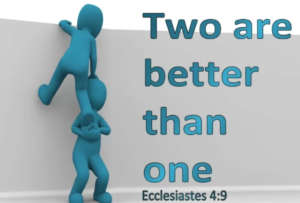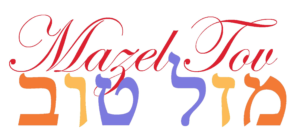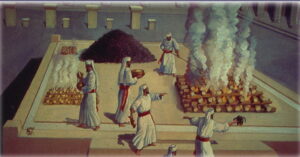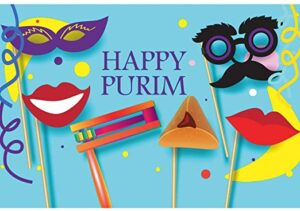 Raboyseyee and Ladies:
Raboyseyee and Ladies:
Says King Solomon: Toivim hashinayim Min Ho’echod (two are better than one): this week we begin with mazel tov shout out two Tracy’s.
A big mazel tov to Marni Gottesman -whom we have known since birth mamish- upon her recent engagement to Jake Gerber, he the only son (along with a good bunch of sisters) of Tracy and Sander Gerber, they of the upper West Side. We have watched Marni grow up, had the pleasure of her company in our home on many a shabbis, other times, and happily observed her as she blossomed into the beautiful and mature young lady she is today. A special mazel tov to Marni’s parents, our good friends of many years, Judith and Shlomo Gottesman and to the entire extended Gottesman clan. A very special mazel tov shout out to grandmothers Sondra Gottesman & Blanche Lerer; may you have much nachas and joy from Marni and Jake. May Marni and Jake merit to enjoy many decades of blissful marriage.
 And a big mazel tov to our neighbors and friends Tracy and Sam Shore upon the birth of a grandson born to their children Ryan and Rivky Shore. May you have much nachas from the new arrival and from you ever growing family. Welcome to the world baby Shore; may you bring much nachas and joy to your parents, grandparents and extended family. Mazel tov as well to Rivky’s parents, Bryna and Mordy Nissel and to their extended family.
And a big mazel tov to our neighbors and friends Tracy and Sam Shore upon the birth of a grandson born to their children Ryan and Rivky Shore. May you have much nachas from the new arrival and from you ever growing family. Welcome to the world baby Shore; may you bring much nachas and joy to your parents, grandparents and extended family. Mazel tov as well to Rivky’s parents, Bryna and Mordy Nissel and to their extended family.
Sacrifices in Messianic Times:
Shoin, after months of klapping (banging) away and getting the Mishkan, the Mizbayach (Tabernacle, Altar) and all accoutrements built and ready to function properly, it’s time to open for business and keep the place humming. As we begin Vayikra (Leviticus), the RBSO provides a few hundred mitzvis along with detailed instructions concerning korbonis (sacrifices/offerings) in the Temple. Some call Sefer Vayikra Toiras Kohain because they, the kohanim, had the Mizbayach master franchise and seemingly got a cut of almost every korban that came their way. Is the RBSO great or what?! Yes! In fact, says one Medrish: the RBSO instituted korbonois to give the otherwise unemployed Koihanim a parnoso. Mamish? How many times has the heylige Ois told you how just how benevolent and merciful the RBSO is? Many! In kimat every parsha, through the mitzvis handed down, be they of the ah-say or lo isa-say variety, the RBSO also created jobs and industries mamish. Korbonis were no exception. All it took then and today is for enterprising Yiddin to read the Toirah and understand how to create a living or business opportunity. Just this week, as the Ois’s family gets ready for its Pesach pilgrimage to Florida, the Ois ordered hand washed romaine lettuce at $16/bag. Shoin! The bottom line: public service pays. Have you ever seen a poor member of the congress or the senate?
Nu, just about now, efsher you’re klerring to yourselves azoy: why not skip over these chapters? Have you seen a mizbayech anywhere? Are people still bringing korbonis? Where? Didn’t we lose the second Beis Hamikdash for bad behavior some 2500 years ago? We did! Should we all join the kiddish club while these parshas are being read? Let’s instead get back to a few salacious stories about who did what, when, and to who. Shoin, as we begin Vayikra we are overwhelmed by the intricate detail with which the heylige Toirah describes the procedures of bringing korbonis. As a result, we typically tune out, fall asleep, talk during laining, read a few handouts many shuls offer for those with severe ADD, stare at the ezras noshim (ladies’ section), skip shul altogether, or make kiddush much earlier. Why? Because no longer relevant korbois bore us to tears.
Ober Raboyseyee, it’s not so poshit and by the time you finish this week’s heylige Toirah, the 12th time we are reviewing Sefer Vayikro, you will chap that while it’s taka emes that we no longer bring korbonis, and though the Ois has a hard time imagining korbonis making a comeback when the Moshiach arrives, for now we have to chap that efsher there are lessons to be learned from them in our daily lives. What those are, ver veyst, but our sages of yore have posited many conflicting theories. In fact one sage, the Rambam stated himself proffers two conflicting theories on why the RBSO ordered up korbonis and if they’re coming back. We shall address that below. The bottom line: in our times, we can no longer fulfill the mitzvah of bringing a korban through action -though it’s avada bavust (well known) that certain actions -if you chap- could lead one to become obligated for the bringing of a korban or two. What to do and why study these intricate laws? Not to worry because our sages teach us that studying them, as we are now, is their fulfillment. Another bottom line: Read the heylige Ois’s review and receive a mitzvah; what could be more givaldig?
Nu, let’s start with basics: what the hec is a korban and why do we need to know? Taka excellent kashas ober as you know the heylige Toirah doesn’t tell us anything we don’t need to know. Case closed; who says you have to know or understand more? Do you chap how radio, TV, email, and the Internet work? Do you chap how your eishes chayil thinks? Zicher not! In Vayikra, the RBSO told Moishe to tell the Yiddin all about korbonis with different rules governing each variety of korban. Not good enough for you?
A Korban then is the term for a variety of sacrificial offerings described and commanded in the heylige Toirah. Such sacrifices were offered in a variety of settings by the ancient Israelites (our forefathers and going all the way back to Kayin and Hevel, remember them?) and later by the Koihanim at the Temple in Yerusholayim. Even our heylige Ovois, on certain occasions, spontaneously built an altar, and brought an offering to the RBSO. A Korban was usually -but not always- an animal sacrifice, such as a sheep or a bull that underwent shechita (Jewish ritual slaughter), and was often cooked and eaten by the offerer, with parts given to the Koihain and parts burned on the Temple mizbayach. Korbonis could also consist of doves, grain, wine and incense. Are you sleeping yet? Here in Vayikra, the RBSO told Moishe all about these strange rituals ober didn’t really tell him why? We got the manual, the grizzly detailed instructions but were epes never told why we bring these. Says the RambaN (Nachmanides), azoy: it’s one of the great secrets the RBSO did not share with us. Don’t we all have secrets? And what do you suppose happened as a result? For centuries to come, beginning with the Reshoinim, our sages and other luminaries have argued vehemently about ‘why’.

On the one hand, no area of Toirah law seems more alien to modern sensibilities than that of korbonis. As we read the laws, we find ourselves at a total loss, unable to relate to these seemingly primitive rituals, wondering why the RBSO -all-powerful and incorporeal- would demand the offering of animals and grain in His worship. On the other hand, we cannot deny that the sacrificial rites are an integral part of the heylige Toirah. Not only are substantial portions of Toirah text dedicated to detailed descriptions of the myriad korbonis, but these rituals apparently remain, a critical component of our national aspirations and dreams. Our liturgy (davening) is replete with prayers seeking the rebuilding of the Temple and the reinstatement of the sacrifices. Why taka does the RBSO demand offerings of animals and grain as part of His worship? Can any relevant lessons be learned from these seemingly archaic rituals? Do we really desire a return to the practice of korbonis when Moshiach arrives?
Seemingly, a huge machloikes (dispute) arose between the RambaM (Maimonides) and the RambaN and let’s see what the fuss is all about. Says the RambaM azoy: korbonois were commanded as a response to the cultural trend, most prevalent in Egypt at that time, of ritually slaughtering animals. Seemingly, the Yiddin had become accustomed to this practice and would have had a very difficult time coping with a religion that did not offer sacrifices as a form of worship. The RBSO chapped all that, He chaps everything all the time, and commanded the Yiddin to bring animal offerings in order to curb their yetzer horoh (evil inclination). In theory then, by bringing a korban to the RBSO, we demonstrate our firm rejection of these beliefs in other deities.
In other words, the RBSO knew that the Yiddin were a bunch of fickle people who could easily fall prey to idol worship -which they did just 40 days after Revelation and again at Shitim with the Moabite and Midianite shiksas- and created Korbonis to help them channel their desires. Channeling desires is avada better than acting out on them, if you chap. Grada men and women of that generation (and many others) had also become accustomed to acting out on other desires, if you chap, ober the RBSO simply forbade those without providing an outlet for such desires. Too bad! The bottom line: though we were not provided with an outlet, with an alternative for such desires, all is not lost. The RBSO did provide a form of forgiveness and atonement through specialized korbonis upon acting out on such desires and we will -in this week’s parsha- be introduced to the korban ‘chatos’ or ‘oshom’ (the guilt or sinner sacrifice); the RBSO is great! Nu, speaking of the korban oshom and korban chatos, listen to this givaldige chiddish (breakthrough). Seemingly, women too may bring certain of these particular korbonis. Efsher you’re wondering what type of guilt or sin would the eishes chayil, or other woman, have to commit in order to bring these offerings? Nu, listen up because pshat is mamish givaldige news for the husbands: we are taught that the veyber (women) may taka bring a korban chatos and oshom offerings in atonement for transgressions and unintentional errors. And just to prove that the medrish always has something pleasurable to share even if the woman of the house didn’t, if you chap, specific examples cited as cause for the bringing of the guilt and sin offering include such dastardly acts as: not taking care of the husband’s needs regularly, feigning headaches, and fakery, if you chap. Avada there are other examples, and efsher we’ll cover them next week. Says the Abarbanel, the RambaM’s position is taka correct and anchored in Midrashic and Talmudic literature. Isn’t everything found there? And says the RambaM (Moireh Nevuchim 3:46) this bombshell: since animal sacrifices are no longer a feature of daily religious worship in most of the world, it is conceivable to suggest that the RBSO will do away with korbonois when the Moshiach arrives. OMG!
Nu, you can only imagine how well that went over with the koihanim who saw this as a threat to their entire future business opportunity in the messianic age. In fact, many koihanim feel that they are preparing for the arrival of Moshiach by learning the halochos (laws) of the avoida (temple service) in the Beis Hamikdash so that they will be ready for resumption of their priestly duties in the Third Temple. Of-course, nobody is really sure whether all of the sacrifices will resume, just a few, or none at all.
Ober say the RambaN: this makes no sense at all and sharply criticizes the RambaM’s theory. Says the RambaN about the RambaM’s theory on korbonois azoy: “These are nonsensical words, which offer healing offhand for a great wound and considerable difficulty.” What that means, the Ois doesn’t know but complimenting the RambaM he wasn’t. In other words: the RambaN lambasted the RambaM’s theory and how he rationalized korbonois. Instead, he offers a hypothesis of his own that spices things up somewhat. Halt kup (pay attention- it’s worth your time). Since the acts of man are comprised of thought, speech, and action, the RBSO commands that when an individual sins and brings an animal sacrifice, he should think about the following when he follows the order.
- the offeror should rest his/her hands upon its (the korban’s) head—corresponding to the sinful action that precipitated this expiation;
- the offeror should confess what he/she did wrong—thereby atoning for the speech that contributed to the transgression;
- the offeror should recognize that the innards and kidneys being burnt in the altar’s fire represent the need for atonement on the part of all human thought and passion;
- the burning of the animal’s limbs corresponds to the need for atonement for the hands and feet of the sinning individual since these limbs carry out all of his/her sinful activity;
- the casting of the sacrifice’s blood upon the altar should bring the phrase to mind, ‘his blood will be on his soul.’
A person, by either doing or watching all of these actions, will come to realize that he/she has sinned against the RBSO with his/her body and or soul, and that he/she deserves that their own blood to be applied to his/her body and be burned. And had it not been for the compassion of the RBSO, who in His benevolence has accepted a substitute, they would be goners. Shoin!
Ok that was a mouthful, what did he really mean? Let’s chazir (review): Says the RambaN azoy: The whole point of the korban is that a person (like yourself by way of a good example) should feel that everything being done to the animal being sacrificed should really be done to the sinner (lemoshol, you). He should feel as if his blood should be spilled and his limbs should be burned, but the RBSO, in His ultimate mercy, agrees to accept the animal as a substitute. Nu, is this a great system or what? Chazerim like yourselves can taka sin with every limb of your bodies and nebech the innocent animal who didn’t lust for his friend’s wife, and zicher didn’t have forbidden relations with her, is nebech slaughtered at the altar?! Now you can appreciate why the RBSO created animals in the first place.
Many commentators agree with the RambaN and note that one is supposed to realize that in reality, he -the offeror- should be the one getting slaughtered during the services. This would cause one to have fear of the RBSO which would eventually lead to teshuva (repentance). Therefore, we were forgiven for our sins through the korbonois. This is also a deeper meaning of the word Korban, usually translated as sacrifice or offering. Korban comes from the word karov (close). To come close to Hashem we have to elevate our animal nature to a G-dly nature. Efsher we can kler that the sacrifices we bring allow us -in close call style- to get away with our ungodly behavior.
Some say that the Korbonois system was created so that sinners who had to bring a Korban would feel the pinch in their pockets. Unfortunately, it was some other pinching -typically elsewhere- that got them into trouble to begin with, if you chap. Avada it’s well known that the imposition of fines and penalties is supposed to deter sinning. The sinner will realize that his wayward ways are getting too costly and get back on the right path. And for this reason, wealthy sinners had to bring a more expensive korban while those with less means got away with a lesser korban. In other words: a poor sinner could commit bigger sins and pay less: givaldig!
Why do we need to learn all about korbonis, ver veyst? Ober the emes is that korbonis mamish follow where Sefer Shmois left off. For the greater part of that Sefer, Moishe was exhorting Paroy to let the Yiddin leave his country. Moishe kept hammering away the RBSO’s message: “Release My people and they will serve Me.” Shoin, finally they were free and we are about to find out that serve Me meant through korbonis, animal sacrifices in the Beis Hamikdash. Veyter.
Earlier we mentioned that many exegetes weigh in with different ideas on why the RBSO ordered up korbonis and dedicated a few parshas of Sefer Vayikra to them. Ober, listen to this: the RambaM, in his Guide of the Perplexed, portrays korbonis as a ruse offered by the RBSO to repudiate idolatrous practices prevalent at the time. The RBSO abhors avoido zoro; He wanted to wean the Yiddin off such practices. In other words: korbonis by themselves have no intrinsic value, and that once the Yiddin would be weaned off such narishe (foolish) behavior, the Yiddin -going forward- would no longer have a need of their own version. Ober, in the Mishneh Toirah, also authored by him, he says farkert: that the Moshiach -upon his arrival, from Crown Heights maybe- will rebuild the Beis Hamikdash and restore korbonis just as they once were.
המלך המשיח עתיד לעמוד ולהחזי’ מלכו’ בית דוד לישנה הממשלה הראשונה ובונה המקדש ומקבץ נדחי ישראל וחוזרין כל המשפטים בימיו כשהיו מקודם מקריבין קרבנו’ ועושין שמטין ויובלות ככל מצותה האמורה בתורה.
“In the future, the Messianic king will arise and return the Kingdom of the House of David to its former place as ruler, and will build the Temple and gather the Jewish exiles, and in his days, all the laws will be reinstated as they were before: sacrifices will be offered, and [the people] will keep the sabbatical and jubilee years in the form they are described in the Torah.” How are his two works reconcilable?
The bottom line: what the RambaM wrote is a stira minay u’bay (mamish a contraction from one source of his to another). Shoin not to worry because this question is well known, discussed, and of course the RambaM was way smarter than all of us. Ober what taka did he mean by stating both positions? Will the real RambaM stand up please. And which position of his do other rabbis understand to be correct?
 Says Rav Yaakov Emden (Mishpat Seforim) so shockingly azoy: the author of the Mishneh Toirah could not have written what the Guide says about sacrifices, and that the latter must therefore be a forgery. Fighting words. As mentioned above, the RambaN excoriated the RambaM for the views expressed in the Guide; other rabbis agree with the RambaN. How taka could one rabbi –a big and important one- like the RambaM give us two opposing views of korbonis? Ober says the Ois azoy: many rabbis talk out of both sides of their mouths and will give different answers to different constituents. They are only human beings; they try their best. Different people need to hear different answers and shoin. RambaM’s views -though seemingly mutually exclusive- might not be. It could taka be that RambaM, philosophically speaking as he does in the Guide, saw little religious value in korbonis; they were but an accommodation. Ober, when he wrote the Mishneh Toirah (all 14 volumes), he was wearing his rabbi hat and, in that uniform, his view needed to conform to what the heylige Toirah dedicates several parshas too. With that hat, korbonis are making a comeback. Kohanim rejoice!
Says Rav Yaakov Emden (Mishpat Seforim) so shockingly azoy: the author of the Mishneh Toirah could not have written what the Guide says about sacrifices, and that the latter must therefore be a forgery. Fighting words. As mentioned above, the RambaN excoriated the RambaM for the views expressed in the Guide; other rabbis agree with the RambaN. How taka could one rabbi –a big and important one- like the RambaM give us two opposing views of korbonis? Ober says the Ois azoy: many rabbis talk out of both sides of their mouths and will give different answers to different constituents. They are only human beings; they try their best. Different people need to hear different answers and shoin. RambaM’s views -though seemingly mutually exclusive- might not be. It could taka be that RambaM, philosophically speaking as he does in the Guide, saw little religious value in korbonis; they were but an accommodation. Ober, when he wrote the Mishneh Toirah (all 14 volumes), he was wearing his rabbi hat and, in that uniform, his view needed to conform to what the heylige Toirah dedicates several parshas too. With that hat, korbonis are making a comeback. Kohanim rejoice!
 The bottom line: why we bring korbonis, ver really veyst? Ober says the Shelah Hakodosh, efsher based on the very first posik of the parsha which states “Odom ki Yakriv Mikem…” (When an adam/man brings a sacrifice offering), azoy: the word ‘Odom’ in the posik refers specifically to man. Which man? Odom Horishoin. It’s all his fault! Pshat may, according to him, efsher be azoy: “know, that if Odom Horishoin (Adam) had not sinned (by eating of the forbidden fruit, a sin since emulated daily by millions of men all over the world, if you chap, which they do), there would have been no need for a separate holy place (the Mishkan), since the entire world would have been Gan Eden (Paradise).” His one sin, the original sin as we know it, is the root cause of the world’s order being rearranged. Wait, there’s more: “Likewise, if Odom had not sinned, there would be no need for some people (the koihanim) to be distinguished from the others, to serve Hashem (the RBSO). Rather, everyone would have been part of the “Kingdom of koihanim and a holy nation” as described with those exact words in the heylige Toirah (Shemois 19:6).” And a bit more” In that world (now long gone), man would not need to offer an offering to Hashem for man himself would have been an offering, just as we are taught that man’s soul is offered on the altar above after his death. Well, blow me down!
The bottom line: why we bring korbonis, ver really veyst? Ober says the Shelah Hakodosh, efsher based on the very first posik of the parsha which states “Odom ki Yakriv Mikem…” (When an adam/man brings a sacrifice offering), azoy: the word ‘Odom’ in the posik refers specifically to man. Which man? Odom Horishoin. It’s all his fault! Pshat may, according to him, efsher be azoy: “know, that if Odom Horishoin (Adam) had not sinned (by eating of the forbidden fruit, a sin since emulated daily by millions of men all over the world, if you chap, which they do), there would have been no need for a separate holy place (the Mishkan), since the entire world would have been Gan Eden (Paradise).” His one sin, the original sin as we know it, is the root cause of the world’s order being rearranged. Wait, there’s more: “Likewise, if Odom had not sinned, there would be no need for some people (the koihanim) to be distinguished from the others, to serve Hashem (the RBSO). Rather, everyone would have been part of the “Kingdom of koihanim and a holy nation” as described with those exact words in the heylige Toirah (Shemois 19:6).” And a bit more” In that world (now long gone), man would not need to offer an offering to Hashem for man himself would have been an offering, just as we are taught that man’s soul is offered on the altar above after his death. Well, blow me down!
 A gitten Shabbis and a happy Purim to all!
A gitten Shabbis and a happy Purim to all!
The Heylige Oisvorfer Ruv
Yitz Grossman
